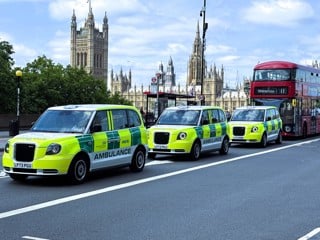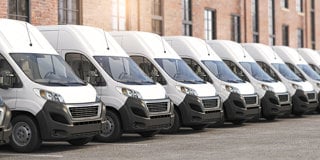Ashwoods manager John Poxon says: “The driver has real-time instruction and, if necessary, warnings and penalties which will show up in the weekly report to fleet managers.
"This means drivers have on-going training and monitoring without disruption to their schedule or the opportunity to relapse into bad habits.”
Camera technology can also monitor and spontaneously improve drivers’ performance, although it is more likely to address issues of wasted carbon and safety through in-traffic performance than, for instance, idling.
Cameras such as Roadhawk, Brigade or EyeDrive all tend to be marketed in terms of improved safety and a reliable defence against bogus insurance claims – but in truth almost all the systems that improve drivers’ on-road behaviour also tend to cut fuel and emissions.
Some camera firms, such as SmartDrive Systems, also offer management reports and feedback to enable targeted training.
Home working is a key way of reducing drivers’ need to commute, but using a local workforce can also pay dividends.
Water treatment company Dakro Environmental has now extended its transport-related environmental programme to examine its recruitment practices.
Sustainability manager Warin Greenway says: “Although we always want the best talent, we do look for local people who are near our office locations or our clients.”
Key points
- Less fuel equals better environmental performance.
- Take away financial incentives to drive large vehicles or for unneeded mileage.
- Make ‘green thinking’ a key part of the company culture. Communicate the fact that safety, economy and environmental issues go hand in hand.
- Tracking, telematics and cameras change attitudes and raise awareness.
- Driver training is effective – but must be regularly reinforced.
- Knowing where drivers are and how they drive is key to lowering emissions.
- Drivers who have to ‘book’ vehicles undertake fewer ‘casual’ journeys.
- Consider home working, local employ-ment projects and intro-ducing ‘travel-free’ days.
- Keep the data visible to all.
Case study: Zenith Hygiene Group
Mike Rayner joined Zenith in 2010 to drive a programme of operational excellence.
The company had a large insurance claims history, a car fleet under the management of HR and a logistics fleet run by operations.
He says he had no idea when drivers left for the day how or where the asset was being deployed and no way of managing safety or environmental impact.
In April 2011, he brought all vehicles under the control of a transport manager, with individual supervisors at each depot.
All vehicles and, by extension, drivers were now under their control.
Since TomTom was introduced to give accurate vehicle tracking and management reports, drivers’ performance has improved dramatically.
Rayner says Zenith’s average car mileage has gone from 59mpg to 71mpg, while its CO2 per car has reduced from 13.9kg per day in November 2011 to 9.5kg; and overall the business is saving 600 tonnes of CO2 annually.
Rayner now wants to put telematics into the 15-strong grey fleet but needs to overcome the issues involved in putting it in private vehicles.





















Login to comment
Comments
No comments have been made yet.